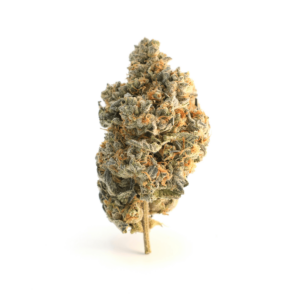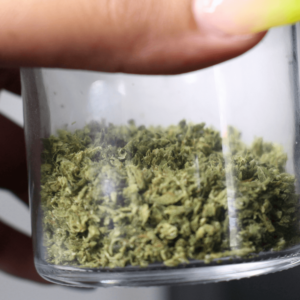When it comes to cannabis, you might have heard the term “PGR weed” tossed around, but what exactly is it?
PGR stands for Plant Growth Regulators, substances used in the cultivation of cannabis to control and enhance plant growth. These synthetic plant growth regulators can lead to a denser, more visually appealing crop, which sounds great at face value.
However, their use in the cannabis industry stirs up quite the debate. Some argue that PGRs compromise the natural quality and potency of the plant, while others see them as a valuable tool for maximizing yields.
In this blog, we’ll explore what PGR weed is all about, explore its impact on both growers and consumers, and weigh in on the ongoing discussion about its place in the cannabis world. Whether you’re curious, concerned, or just want to be informed, join us as we unpack the nuances of PGR weed.

What Are Plant Growth Regulators?
Plant Growth Regulators (PGRs) are like the unsung heroes of agriculture, quietly influencing how cannabis plants grow and develop. These substances can encourage or inhibit specific plant processes, depending on what’s needed. Imagine them as a sort of plant personal trainer, pushing a crop towards the farmer’s desired outcome.
PGRs work by interacting with the plant’s natural hormones, essentially guiding how plants allocate their energy and resources. In agriculture, common types of PGRs include auxins, cytokinins, and gibberellins, each with a unique job like promoting root growth or delaying leaf drop.
Within cannabis cultivation, certain plant growth regulators are used to produce plants with tighter buds and a more appealing appearance. It’s kind of like putting your plants on a beauty regimen to enhance certain traits.
How PGRs Affect Cannabis
In the world of cannabis cultivation, PGRs wield significant influence over plant growth, often boosting yields by creating bulkier and denser buds. However, the impact of PGRs stretches beyond just looks and quantity.
These regulators may compromise the plant’s natural potency and flavor, potentially reducing the concentration of key cannabinoids and terpenes. For some cannabis consumers, this trade-off is a serious buzzkill, as the essence of cannabis lies in its natural aroma and effects.
Moreover, there are bubbling concerns about the potential health implications of consuming PGR-treated weed. While they’re deemed safe for food crops in controlled amounts, the intensity and method of cannabis consumption—often smoking—raise new questions about long-term health effects. As we dig deeper, it becomes clear that while PGRs pack a punch in agriculture, their use in cannabis requires careful consideration.
Identifying PGR Cannabis
Distinguishing PGR-treated cannabis from its organic counterparts can sometimes feel like a game of spot the difference. Here are some visual cues to help identify PGR weed:
- Dense Buds: PGR weed is often super dense and noticeably heavier due to its compact structure.
- Muted Colors: The vibrant greens and frosty trichomes of organic cannabis might be dulled down in PGR-treated plants.
- Less Aromatic: A muted scent is a red flag; organic cannabis generally offers a richer aroma thanks to its terpene content.
Tips for Differentiation:
Look for the natural, frosty appearance of trichomes as a sign of quality. Additionally, rely on smell; a rich, aromatic scent often indicates organic quality.
Common Misconceptions:
It’s important to remember that PGR weed doesn’t always mean bad quality; it’s about understanding the trade-offs involved.

Pros and Cons of PGR Weed
Benefits for Cannabis Growers
- Increased Yield: PGRs help produce more cannabis per plant, which can make a huge difference in commercial operations.
- Uniformity: Growers appreciate consistent crop appearance, which is easier to achieve with PGRs.
Drawbacks for Consumers
- Reduced Potency: There’s often a noticeable drop in the potency and terpene profile of PGR-treated cannabis.
- Health Concerns: Potential health risks remain a significant worry for users, especially those who smoke.
Environmental Implications
- Chemical Runoff: The use of PGRs can lead to chemical runoff, posing risks to local ecosystems.
- Sustainability: Organic farming practices are generally more eco-friendly, promoting better soil health and biodiversity.
Legal and Regulatory Aspects
When it comes to the legal status of PGR use in cannabis or THCa flower, the landscape varies widely across regions. In some areas, the use of PGRs in cannabis cultivation is strictly regulated or even prohibited due to health concerns. Different regulatory bodies have set guidelines to ensure that cannabis products remain safe for consumption, often requiring detailed labeling and testing to confirm herbicide-free growing processes.
On an international level, the conversation around PGRs reflects broader debates about agricultural standards and consumer safety. For instance, European countries tend to enforce stricter regulations compared to other parts of the world.
As legal frameworks continue to evolve, staying informed about regional guidelines is crucial for both growers and consumers in navigating the complex terrain of cannabis cultivation.

Consumer Awareness and Education
Educating consumers about PGR weed is crucial to fostering informed decisions regarding cannabis consumption. With many users potentially unaware of what PGRs are or how they impact cannabis, awareness campaigns play a vital role.
Consumers can access various resources to help identify PGR-treated weed, such as guides that detail visual and aromatic differences between organic and treated cannabis. Additionally, organizations and advocacy groups are stepping up to promote safe consumption practices, focusing on transparency and comprehensive labeling.
Initiatives like these empower consumers to make choices aligned with their health preferences, while also pressuring the industry to maintain high standards of product quality.
Cultivating PGR-Free Cannabis
For growers aiming to cultivate PGR-free cannabis, adopting best practices is key to success. This involves using organic and sustainable alternatives to PGRs, such as natural fertilizers and environmentally friendly pest control methods. Embracing these methods not only enhances plant quality but can also foster healthier ecosystems.
Many success stories from within the cannabis community illustrate how growers have thrived without PGRs, producing aromatic and potent strains that resonate with health-conscious consumers.
As demand for organic products surges, growers who prioritize sustainable practices are leading the way, proving that quality cultivation doesn’t have to come at an environmental cost.
Conclusion
With the cannabis landscape constantly evolving, understanding the impact of plant growth regulator-treated cannabis and organic alternatives plays a vital role in the decision-making process for both consumers and growers. While PGRs increase yield and uniformity, they often compromise potency and taste, potentially affecting health.
The modern cannabis consumer values transparency and quality, leveraging education to make informed choices. As we move forward, it’s crucial to prioritize responsible consumption and support practices that align with sustainability.
We encourage readers to stay curious, explore resources, and seek out products that meet their health and environmental standards. Choice matters—make it count.

Frequently Asked Questions
1. Is PGR weed better than organic weed?
It really depends on what you’re looking for. A cannabis plant treated with plant growth regulators can be more appealing to growers due to its higher yield and consistent appearance. However, many users prefer natural weed for its better terpene profile and natural potency. Essentially, it’s a personal choice between quantity and quality.
2. What can PGR do to your body?
There are concerns about the long-term health effects of consuming PGR cannabis. Some studies suggest that using PGRs can lead to potential health risks, especially when inhaled. It’s important to stay informed and consult reputable sources to understand these impacts fully.
3. Is PGR weed legal?
The legality of PGR weed varies based on where you are. In some regions, the use of PGRs in cannabis cultivation is restricted or outright banned due to safety concerns. Always check local regulations to ensure you’re in compliance and that your cannabis products are safe.
4. How do I know if my weed has PGR?
Spotting PGR-treated cannabis can be a bit tricky, but there are some telltale signs. PGR weed tends to be denser, with less vibrant colors and a muted aroma compared to organic options. Trusting trusted suppliers and reviewing lab testing results can provide more assurance of the product’s nature.





